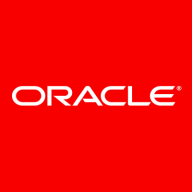

MySQL and InfluxDB are popular databases competing in the database solutions category. MySQL appears to have the upper hand in terms of pricing and support, while InfluxDB stands out for its features and scalability, appealing for specific use cases despite higher costs.
Features: MySQL is known for its multi-threaded architecture, triggers, replication, and full-text search, making it flexible and reliable for small to medium applications and popular in web development. InfluxDB excels in time-series database capabilities, efficient data handling, and strong performance with visualization tools, although it may lack some relational features compared to MySQL.
Room for Improvement: MySQL users highlight challenges with InnoDB complexity, limited support for advanced RDBMS features, and replication reliability. InfluxDB could improve with better clustering, user-friendly interfaces, and comprehensive documentation for easier integration with other tools.
Ease of Deployment and Customer Service: MySQL offers flexibility in deployment across various environments and extensive community support due to its open-source nature. InfluxDB supports diverse deployment options, though users seek better integration. MySQL relies on community forums for support, while InfluxDB users may face higher support costs.
Pricing and ROI: MySQL is cost-effective with a free open-source version and paid enterprise options, offering solid ROI for basic database functions without licensing fees. InfluxDB, also open-source, may incur scaling costs with recent price increases impacting its value for extensive deployments. Both can provide good returns depending on business needs and technical demands.
| Product | Market Share (%) |
|---|---|
| MySQL | 8.9% |
| InfluxDB | 4.6% |
| Other | 86.5% |


| Company Size | Count |
|---|---|
| Small Business | 4 |
| Midsize Enterprise | 3 |
| Large Enterprise | 6 |
| Company Size | Count |
|---|---|
| Small Business | 73 |
| Midsize Enterprise | 31 |
| Large Enterprise | 61 |
InfluxDB is open-source software that helps developers and enterprises alike to collect, store, process, and visualize time series data and to build next-generation applications. InfluxDB provides monitoring and insight on IoT, application, system, container, and infrastructure quickly and easily without complexities or compromises in scale, speed, or productivity.
InfluxDB has become a popular insight system for unified metrics and events enabling the most demanding SLAs. InfluxDB is used in just about every type of industry across a wide range of use cases, including network monitoring, IoT monitoring, industrial IoT, and infrastructure and application monitoring.
InfluxDB offers its users:
InfluxDB Benefits
There are several benefits to using InfluxDB . Some of the biggest advantages the solution offers include:
Reviews from Real Users
InfluxDB stands out among its competitors for a number of reasons. Two major ones are its flexible integration options and its data aggregation feature.
Shalauddin Ahamad S., a software engineer at a tech services company, notes, “The most valuable features are aggregating the data and the integration with Grafana for monitoring.”
MySQL is an open-source database known for its ease of use and high performance. It offers features like replication and clustering, making it ideal for diverse applications. Its cost-effectiveness and LAMP integration are key advantages for businesses.
MySQL supports a variety of languages and platforms, providing reliable, scalable data management. Its graphical interface and LAMP architecture integration enhance its usability, while community support further strengthens its appeal. Challenges include scalability issues with large databases, lack of advanced clustering, and limited high-availability features. Complex queries may affect performance, and integration can pose difficulties. The outdated interface and insufficient documentation are also concerns, along with replication and backup reliability issues.
What are MySQL's key features?MySQL is widely implemented in industries such as web development, e-commerce, and finance. It's used for managing dynamic websites, powering e-commerce platforms, and supporting financial applications. Its compatibility with PHP and cost-effectiveness make it suitable for CMS platforms like WordPress. With cloud services integration, MySQL is a backend choice for scalable applications in various sectors.
We monitor all Open Source Databases reviews to prevent fraudulent reviews and keep review quality high. We do not post reviews by company employees or direct competitors. We validate each review for authenticity via cross-reference with LinkedIn, and personal follow-up with the reviewer when necessary.